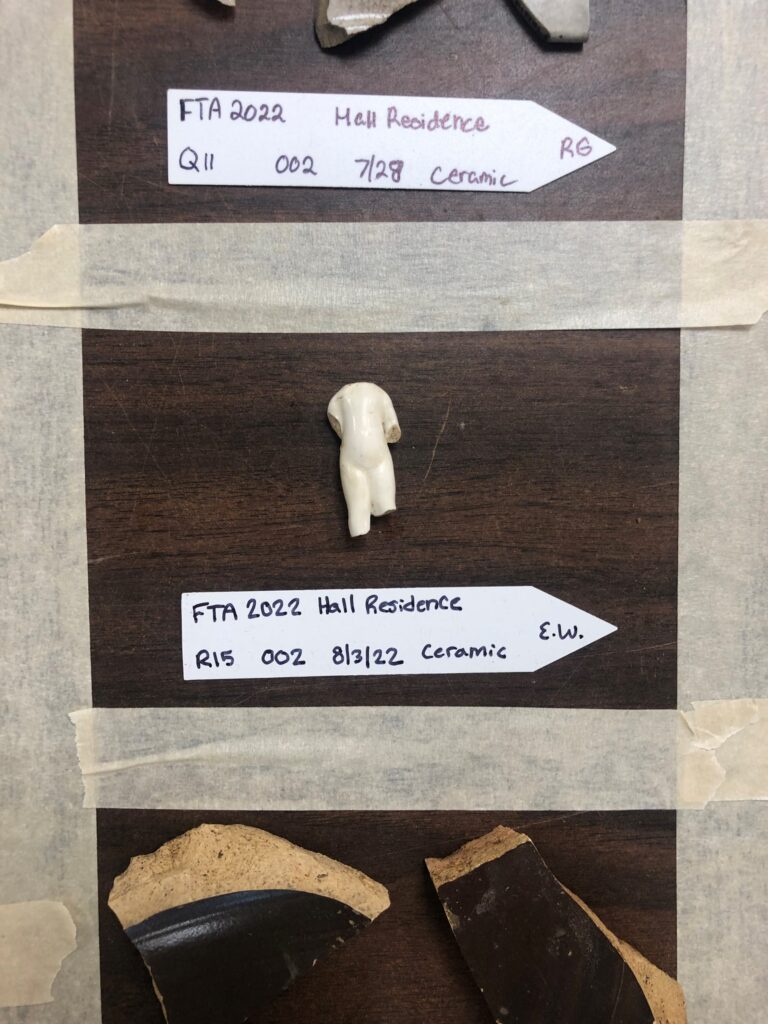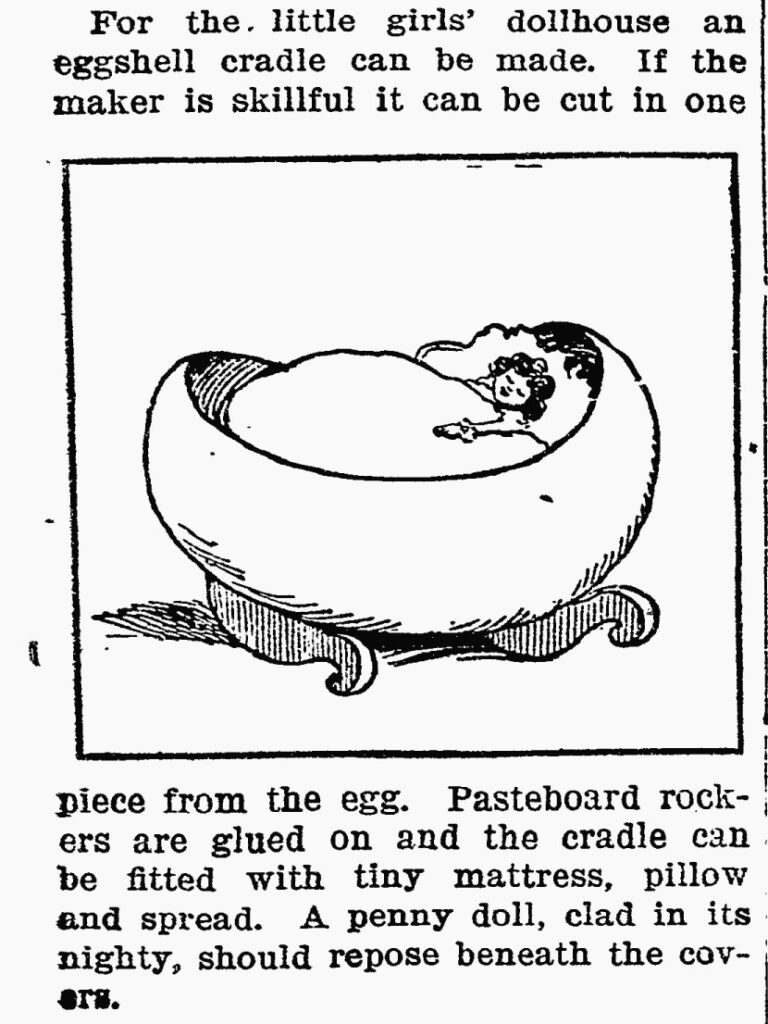This Frozen Charlotte exhibit was put together by Emily Yahn (Brockport ’23) as part of an internship in the spring of 2023 with Dr. Smith.
“Frozen Charlotte” or Penny Dolls
Small ceramic dolls, known as Penny Dolls, were popular in the mid to late 1800s. Known later as “Frozen Charlotte” dolls, these toys were common due to their inexpensive price. Dolls ranged from one to four inches and sometimes had painted makeup. In 2022 the Frost Town Archaeology team found a “Frozen Charlotte” at the Hall site, giving us a rare glimpse into childhood at Frost Town.




The name ‘Frozen Charlotte’ originates from a folk ballad called “Fair Charlotte” from around 1835. As the story goes, a young woman named Charlotte went out for a carriage ride during the winter and died of hypothermia because she refused to cover up her beautiful dress with heavy winter clothing. This story of a young woman’s death due to hypothermia became associated with these dolls later on due to their porcelain pale appearance and frozen stiffness.
Listen below for three versions of “Fair Charlotte” from the mid 20th Century!
“Young Charlotte” by Mrs. Peel, Jamestown, AR 1962 (Wolf Collection)
“Fair Charlotte” by Ward Ford, California, 1938 (Library of Congress)
“Young Charlotte” by Almeda Riddle, 1962 (Wolf Collection)
There is no original text for “Fair Charlotte” as it was a folk ballad that circulated by people singing it from memory. The traditional text of the ballad is reproduced here, though many versions exist:
Fair Charlotte lived on a mountain side,
In a wild and lonely spot,
No dwelling was for three miles round,
Except her father’s cot.
On many a cold and wintry night,
Young swains were gathered there,
For her father kept a social board,
And she was very fair.
Her father loved to see her dress
Fine as a city belle, —
She was the only child he had,
And he loved his daughter well,
On New Year’s eve, when sun was set,
She gazed with a wistful eye,
Out of the frosty window forth,
To see the sleighs go by.
She restless was, and longing looked,
Till a well known voice she heard,
Came dashing up to her father’s door,
Young Charley’s sleigh appeared.
Her mother said, — “My daughter dear,
This blanket round you fold,
For ‘t is an awful night without,
And you’ll be very cold.”
“Oh nay, oh nay,” young Charlotte cried,
And she laughed like a Gypsy queen,
“To ride in blanket muffled up,
I never will be seen.”
“My woolen cloak is quite enough,
You know it is lined throughout,
Besides I have my silken shawl,
To tie my neck about.”
Her gloves and bonnet being on,
She jumped into the sleigh,
And off they went, down the mountain side,
And over the hills away.
With muffled faces, silently,
Five long, cold miles were passed,
When Charles, in few and broken words,
The silence broke at last.
“Oh! Such a night I never saw,
My lines I scarce can hold,” —
Fair Charlotte said, in a feeble voice,
“I am exceeding cold.”
He cracked his whip and they onward sped,
Much faster than before,
Until five other dreary miles,
In silence they passed o’er.
“How fast,” says Charles, “the frozen ice
Is gathering on my brow,”
Said Charlotte, in a weaker voice,
“I’m growing warmer now.”
Thus on they went through the frosty air,
And in the cold starlight,
Until the village and bright ball-room,
They did appear in sight.
Charles drove to the door, and jumping out,
He held his hand to her, —
“Why sit you there like a monument,
That has no power to stir?”
He asked her once, he asked her twice,
She answered never a word:
He asked her for her hand again,
But still she never stirred.
He took her hand into his own,
Oh God! It was cold as stone!
He tore the mantle from her brow,
On her face the cold stars shone.
Then quickly to the lighted hall,
Her lifeless form he bore,
Fair Charlotte was a frozen corpse,
And her lips spake never more.
He threw himself down by her side,
And the bitter tears did flow,
And he said, “My own, my youthful bride,
I never more shall know!”
He twined his arms around her neck,
He kissed her marble brow,
And his thoughts went back to where she said,
“I am growing warmer now.”
He bore her body to the sleigh,
And with it he drove home:
And when he reached her father’s door,
Oh! How her parents mourned!
They mourned the loss of a daughter dear,
And Charles mourned o’er her doom,
Until at last his heart did break,
And they both lie in one tomb.
Affordable Dolls and Accessories
Archaeologically, parts of Penny Dolls are found throughout the region, attesting to their popularity and accessibility. They often came naked, encouraging young girls to sew clothes and make other accessories that would reaffirm gendered roles in 19th century America.


Next Page: Frost Town Abandoned
